Minsik Jeon
Open-World Object Detection with Instance Representation Learning
Sep 24, 2024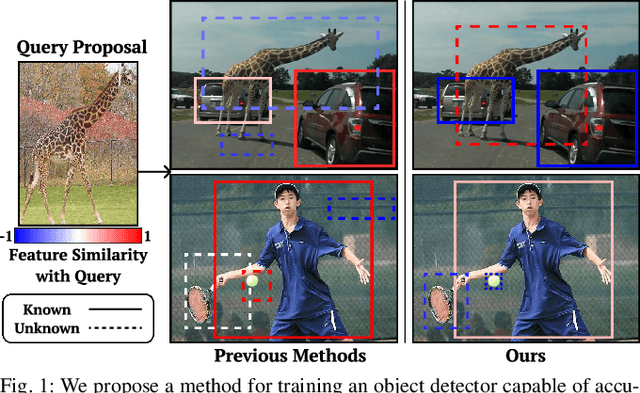
Abstract:While humans naturally identify novel objects and understand their relationships, deep learning-based object detectors struggle to detect and relate objects that are not observed during training. To overcome this issue, Open World Object Detection(OWOD) has been introduced to enable models to detect unknown objects in open-world scenarios. However, OWOD methods fail to capture the fine-grained relationships between detected objects, which are crucial for comprehensive scene understanding and applications such as class discovery and tracking. In this paper, we propose a method to train an object detector that can both detect novel objects and extract semantically rich features in open-world conditions by leveraging the knowledge of Vision Foundation Models(VFM). We first utilize the semantic masks from the Segment Anything Model to supervise the box regression of unknown objects, ensuring accurate localization. By transferring the instance-wise similarities obtained from the VFM features to the detector's instance embeddings, our method then learns a semantically rich feature space of these embeddings. Extensive experiments show that our method learns a robust and generalizable feature space, outperforming other OWOD-based feature extraction methods. Additionally, we demonstrate that the enhanced feature from our model increases the detector's applicability to tasks such as open-world tracking.
DA-RAW: Domain Adaptive Object Detection for Real-World Adverse Weather Conditions
Sep 15, 2023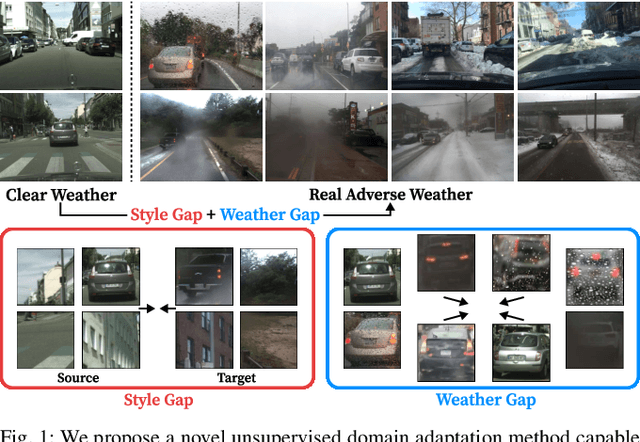
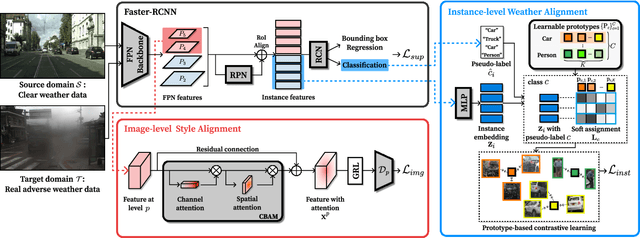
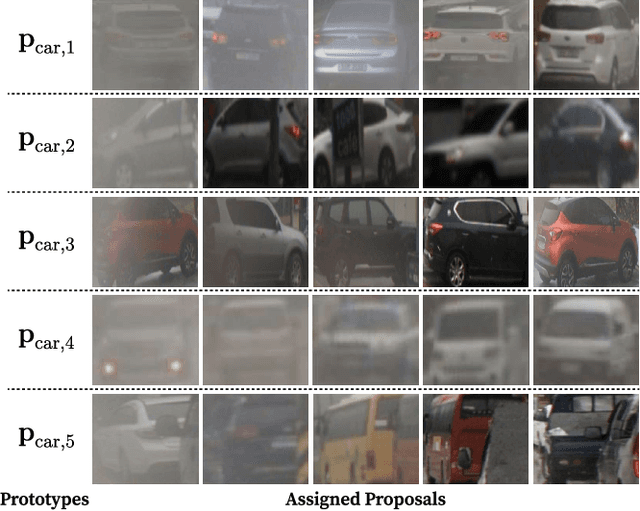
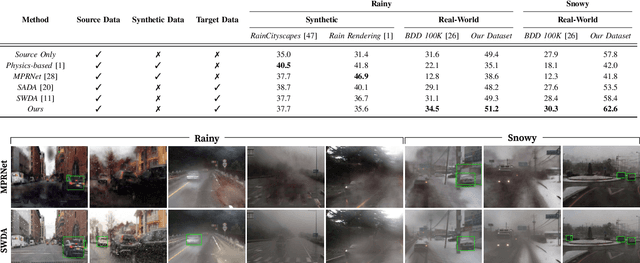
Abstract:Despite the success of deep learning-based object detection methods in recent years, it is still challenging to make the object detector reliable in adverse weather conditions such as rain and snow. For the robust performance of object detectors, unsupervised domain adaptation has been utilized to adapt the detection network trained on clear weather images to adverse weather images. While previous methods do not explicitly address weather corruption during adaptation, the domain gap between clear and adverse weather can be decomposed into two factors with distinct characteristics: a style gap and a weather gap. In this paper, we present an unsupervised domain adaptation framework for object detection that can more effectively adapt to real-world environments with adverse weather conditions by addressing these two gaps separately. Our method resolves the style gap by concentrating on style-related information of high-level features using an attention module. Using self-supervised contrastive learning, our framework then reduces the weather gap and acquires instance features that are robust to weather corruption. Extensive experiments demonstrate that our method outperforms other methods for object detection in adverse weather conditions.
 Add to Chrome
Add to Chrome Add to Firefox
Add to Firefox Add to Edge
Add to Edge